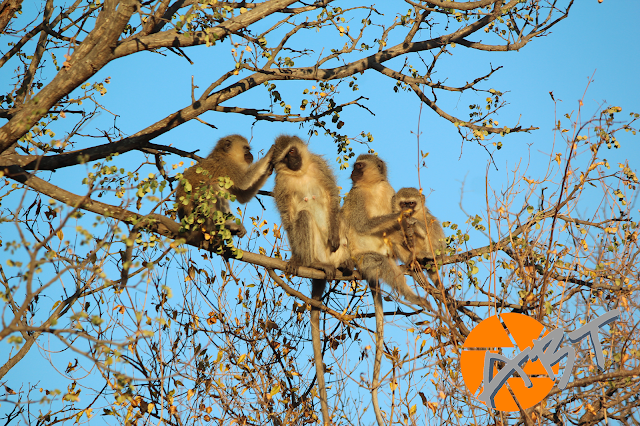Vervet Monkeys (Cercopithecus aethiops)#ConservationTuesday
Vervets living near areas inhabited by people can become
pests, stealing food and other items and raiding crops. This leads to a heavy
annual slaughter by poison, traps, and guns. In recent years, vervet monkeys
have been considered a valuable research animal, making live trapping prevalent
as well. The have a life span up to 30 years.
The males are slightly larger than the females and are
easily recognized by their turquoise blue scrota. They form complex but stable
social groups (also called troops) of 10 to 50 individuals mainly consist of
adult females and their immature offspring. Males move freely in and out of
these groups. Within the troop, each adult female is the center of a small
family network. Females who have reached puberty generally stay in the troop.
Females typically have few mates in their lifetime, whereas
some males have numerous mates. Breeding is seasonal. After a gestation period
of approximately 140 days, a single baby is born between March and May.
Grooming is important in a monkey’s life. Vervets (as well
as most other primates) spend several hours a day removing parasites, dirt or
other material from one another’s fur. In the primates’ hierarchy, dominant
individuals get the most grooming. The hierarchical system also controls
feeding, mating, fighting, friendships and even survival.
Habitat : woodland, savanna, high bush
Diet : omnivorous
Gestation : about 5.5 months
WEIGHT : 3 TO 5 KILOGRAMS




Comments
Post a Comment